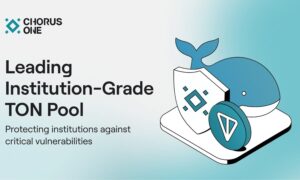Consider for a moment the heart of your organization. It’s not the CEO or the products or services you offer. It’s your database. Your database holds all your business’s vital information, from customer details to sales records. This data forms the backbone of your organization, dictating your decision-making and driving your business growth. As such, ensuring this data is safe and secure is essential.
Now, you might think that your database is safe. After all, you’ve installed the latest antivirus software, and your firewall is up to date. But the reality is, ensuring a secure database is a far more intricate task than it appears. It involves many factors, including user access control, data encryption, and regular auditing.
Databases are a Major Target
With 99% of corporations using a cloud strategy, and 92% implementing multi-cloud solutions, databases have become the critical backbone of numerous organizations’ operations and data management systems. They are repositories that store extensive and sensitive data, such as customer profiles, financial records, proprietary information, business insights, and more. This data forms the basis of a company’s operation, driving strategic decisions, enhancing customer experiences, and enabling innovation.
However, this rich resource of information is not just valuable to the organizations that own them but is equally, if not more, attractive to cybercriminals. In the hands of bad actors, the data that drives a business’s success could be weaponized to fuel its downfall. Cybercriminals can exploit this data for a variety of nefarious purposes. Identity theft is one potential risk, where criminals use stolen personal details to impersonate individuals and commit fraud.
Hackers can also leverage the data to orchestrate sophisticated financial fraud schemes, manipulating transactions or altering financial records to siphon funds. Corporate espionage is another grave concern where cybercriminals, often sponsored by rival corporations or hostile states, steal proprietary information to undermine a company’s competitive advantage
Besides external threats like the ones highlighted above, internal threats can pose a substantial risk to organizations’ databases. These threats include current and former employees, contractors, and business partners misusing their authorized access for personal gain. Insider threats can also lead to severe consequences, such as data breaches, theft of trade secrets, and sabotage of security measures.
Top Threats to Database Security
Understanding the threats is a crucial first step in safeguarding your data. One of the most prevalent threats is SQL injection. This type of cybersecurity risk occurs when hackers manipulate SQL queries, enabling unauthorized access to the database. Such attacks can result in altering or deleting critical data, potentially causing significant operational disruptions and financial losses.
In addition, malware targeting databases is another significant concern. Database malware, often disguised as legitimate software, can infiltrate your systems, corrupt your data, or even destroy it entirely. The damage caused by malware can be extensive, affecting the integrity of your data and the overall functionality of your database systems.
Another notable threat comes from Distributed Denial of Service (DDoS) attacks. These attacks aim to overwhelm your database servers with internet traffic, rendering them unavailable for legitimate users. Such attacks can significantly affect your organization’s productivity and customer service, leading to potential brand damage and loss of trust among customers.
Protecting Against Database Threats
Protecting databases from threats begins with physical security. You can implement secure server rooms, access control, and surveillance to safeguard the database’s physical server housing. Control over accounts and privileges is equally essential. This means that users should only have access to what they need, their accounts should be updated regularly, and strong password policies should be in place. Additionally, two-factor authentication should be used for added security.
Maintaining the security of your databases also involves steps like conducting regular updates and patching of database servers. This mitigates the risk of exploitation through known vulnerabilities. Additionally, it’s vital to restrict public network access to your database server, ensuring only authorized users within your organization can access it.
Incorporating encryption into your security strategy is another crucial step. Encrypting all files and backups creates an extra layer of security. This means even if a cybercriminal manages to infiltrate your system and steal your data, they’d be unable to decipher it without the specific encryption key.
Some best practices you can implement to protect your database from security threats include:
- Use of Strong, Unique Passwords: Implementing strong, unique passwords for all database accounts is critical in securing databases. It provides a first defense against unauthorized access and potential data breaches.
- Limited Access Provision: Limiting database access to only those who need it helps minimize the number of potential points of compromise. It’s a crucial strategy in reducing the risk of insider threats and breaches.
- Regular, Secure Data Backups: Regularly backing up data and ensuring these backups are secure safeguards against data loss in the event of a cyberattack or system failure. It’s a fundamental part of a robust data protection strategy.
- Monitoring of Database Activity: Keeping a keen eye on database activity can help detect unusual or suspicious behavior that may signal a security breach. Continuous monitoring is essential for timely response and mitigation of threats.
- Staff Training on Database Security: Training staff on the importance of database security increases their awareness and understanding of potential threats and best practices, fostering a culture of security within the organization.
- Regular Audits: Frequently carrying out security reviews and potential risk evaluations are crucial for pinpointing possible frailties in your database safety, thus enabling preventive steps to fortify the protective systems.
- Encryption of Sensitive Data: Encrypting sensitive data stored in databases is a vital practice to prevent unauthorized access. This method ensures that even if data is intercepted or breached, it remains unreadable and useless to the attacker, thereby preserving its confidentiality and integrity.
Database security is a critical concern for all organizations. The threats are real, and the potential impact is significant. However, you can significantly reduce your risk by understanding these threats and implementing the proper security measures to mitigate these threats.

































